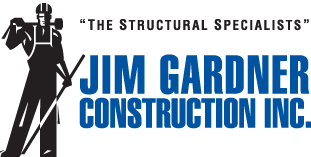If there’s one thing I’ve learned in my nearly 40 years as a structural contractor, it’s that lack of preparation and research is the #1 reason homeowners end up getting burned on foundation projects like basement digouts. In this article, I’ll tell you about some common pitfalls to avoid when choosing a Bay Area basement digout contractor. Let’s jump right in …
There are couple of paths you can follow when you are digging out under your house to create new living space:
Hire a Contractor for the Whole Project
One approach is to hire a contractor for the entire project. This includes the structural and remodel work from start to finish. The advantage of this is to have a more seamless job with all of the details being considered in the design and execution of the work. This could be done either with a design-build company that handles everything, or hiring an architect to do the design and having contractors bid the work with a general handling all of the construction. This tends to be a more expensive solution for homeowners, as most general constructors subcontract out this work.
Hire a Foundation/Structural Specialist for the Basement Digout
The alternative is to hire a foundation or structural contractor to do the dig-out and relevant structural work, and then to bid out the remodeling separately. Why would you want to do this? For several reasons:
- You save money (as much as $50,000-100,000 on larger jobs) by getting more competitive pricing on the remodel work, with clients generally acting as their own contractors and hiring subs, carpenters, etc. to deal with the more detailed parts of the project.
- You have more personal control over the design and work or to spread it over a longer period of time to keep the budget under control.
If You Decide on Option #2, Here's What You Need to Know
It’s important to consider the relationship between the initial project and the future remodel, both in terms of what needs to be considered in the initial job that will affect the remodel, and how these projects are viewed by the various building departments and the pitfalls to avoid moving forward. It would probably be easiest to illustrate this using an example of a project we are currently working on in Oakland … The owner had an existing basement with an average ceiling height of around 6.5’ that was being used mostly as storage, but which she wants to convert to living space in the near future. She has a plan of how she wants everything laid out: adding a couple of bedrooms, 2 baths, family room, laundry, and garage, and has hired us to do the structural.
We had our engineer draw basic plans for new foundations, drainage and slabs with a new ceiling height of 8’. In our plans we show this space remaining as unfinished basement. The City of Oakland does not allow you to create new finished space, including things like bathrooms and bedrooms, kitchens etc. (some of which may not be legally allowed due to zoning regulations) without proper permitting. Generally, they will allow you to add storage, office space, utility areas, etc., if these spaces are already partially finished but the ceiling height is increasing, but in our case we just showed it as unfinished basement before and after. The primary things we had to consider were the locations of future doors and windows and locations of plumbing that would go under the slab (i.e., drain line for bathrooms).
In this project we had the rear door shifting over (affecting the foundation), and we had to install sleeves in the foundation in the areas of the planned bathrooms for drain lines to be done during the remodel. Since we had a basic design of where things were going to be, we were able to determine that we had sufficient height in the locations of the bedrooms for future egress windows required by code.
The new central foundation was done below the slab level to allow for a central wall where we could add future openings wherever we saw fit rather than having to decide now on their exact locations. Instead of adding seismic upgrades now as part of the structural work, that was deferred to the remodel, since insulation, electrical, etc. would be behind any plywood sheer walls that would go in and would require their removal later.
Our experience with complete basement remodels and related permitting issues and how they vary from one city to another allows us to anticipate in advance issue that might come up later in the remodel, or might cause the dig out plan to get rejected by the City up front and complicated and future remodeling plans.
In Summary: How to Choose the Right Bay Area Structural Contractor for You
A well-organized project with the structural and remodel that are separated, can easily save a client $50,000-100,000 on a larger basement job if they want to manage their own remodel project. But it is crucial that elements are not left out of the structural work that would cause problems later on, or require demo or redo of structural work, particularly if under slab plumbing issues are not considered early on. And making sure proper drainage is done as part of the work is critical. Some structural designs leave in the current foundations and excavate in front of them to add additional foundation. In this scenario drainage is often ignored … until it causes major problems in the newly finished space in the next wet winter!
My final $0.02: if you’re considering a basement digout job in the Bay Area, talk to a structural specialist.



